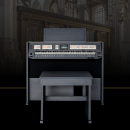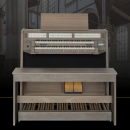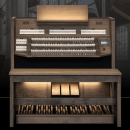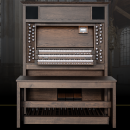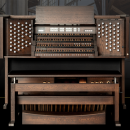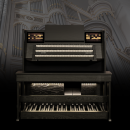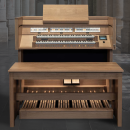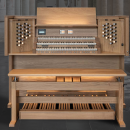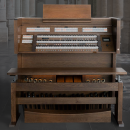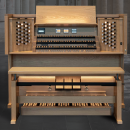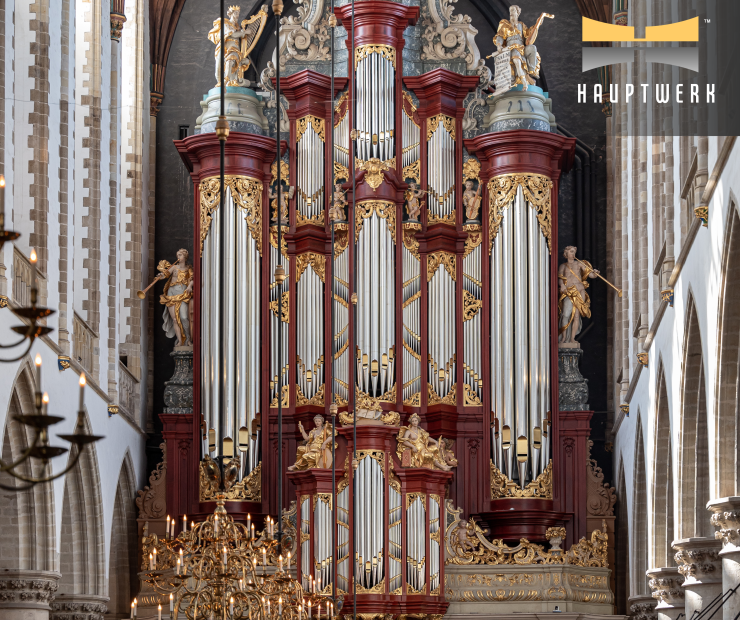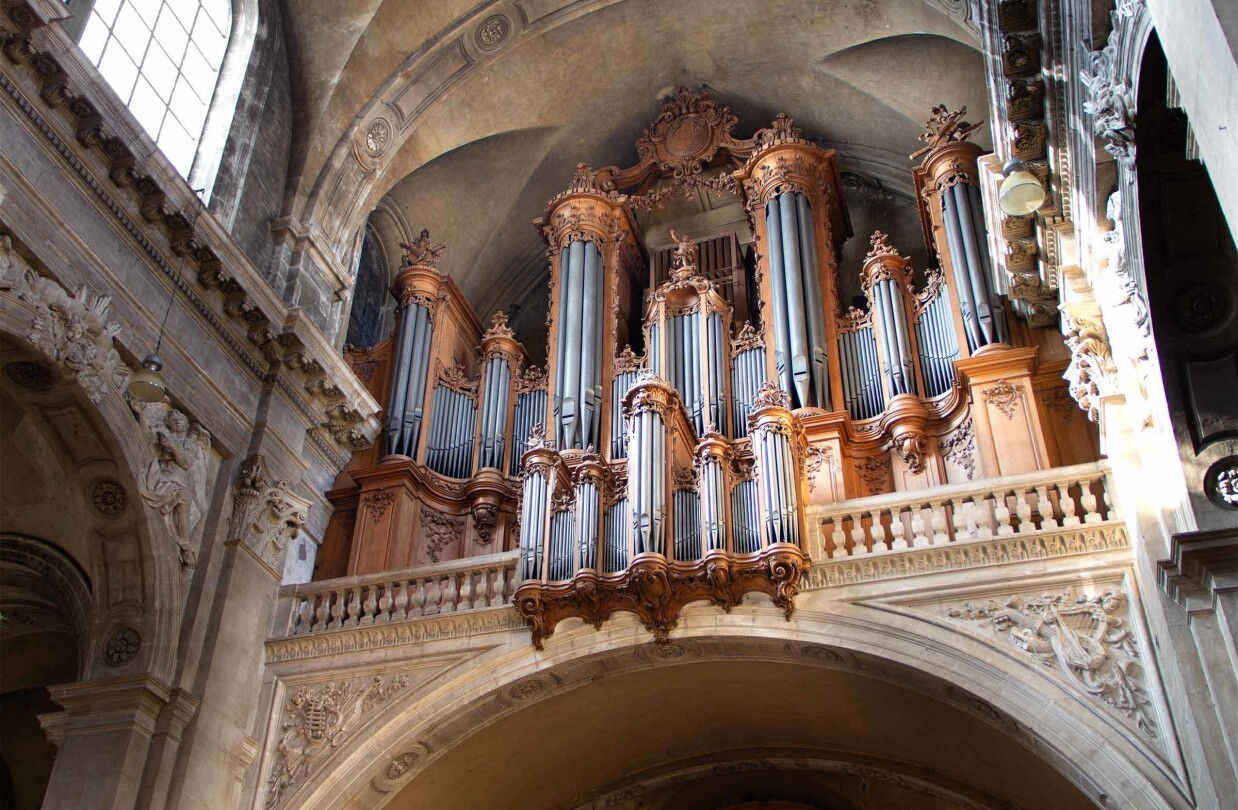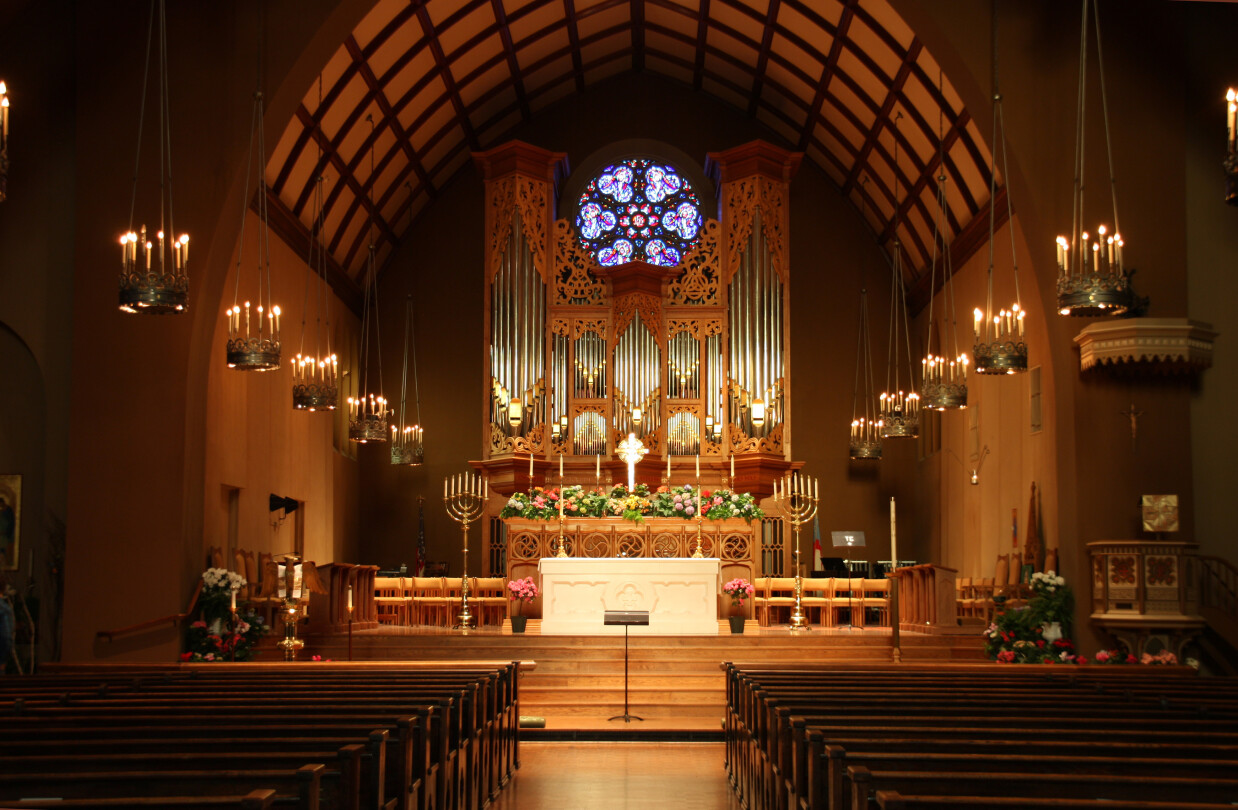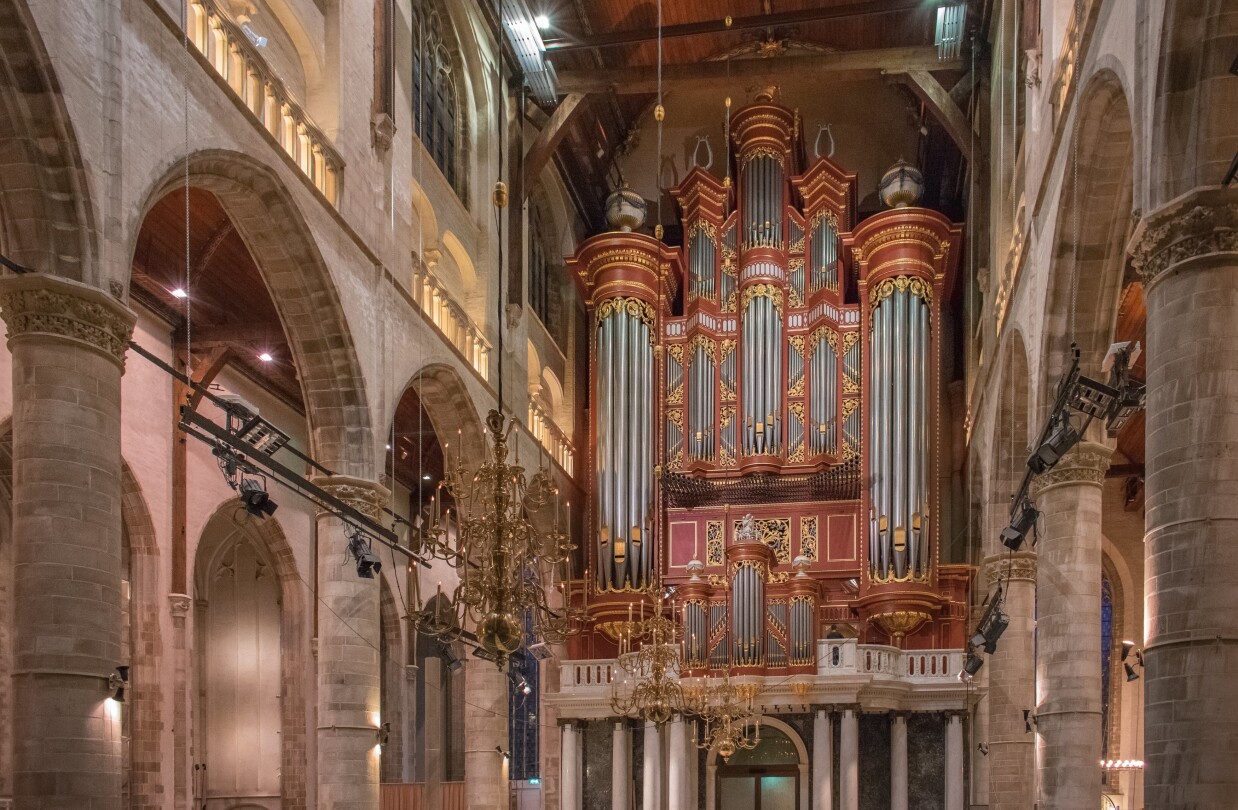Erfurt Predigerkirche
Erfurt is the capital city of the Thuringia region in Germany. The Predigerkirche (Preachers’ Church), located in the city centre, is one of the oldest churches in the city, built in the 14th century in gothic style. The magnificent organ case dates back to 1648, when Ludwig Compenius built a Baroque organ. It is worth noting that in the years between 1678 and 1690 Johann Pachelbel, the famous Baroque composer, was the organist in the Predigerkirche. The organ had two manuals and a pedal but was quite prone to failures, resulting in several rebuilds of the instrument.
While retaining the beautiful casework, the interior was replaced by a new organ in around 1898, built by Walcker with tubular action and kept in a romantic aesthetic. In the 1950s its condition continued to get gradually worse, so the idea of building a new organ surfaced. In the end a new organ was built by Schuke from Potsdam (Germany) in 1977. It was conceived in a neo-baroque style, corresponding much better with the phenomenal baroque case.
Great and Swell
The organ has 4 divisions: Hauptwerk, Schwellwerk, Positiv and Pedal. We can find the Hauptwerk in the upper floor of the main organ case. Its principal chorus (Plenum) builds up from a Principal 16′, with two Quinte stops (5 1/3′ and 2 2/3′) and is crowned with two mixtures: Groß Mixtur at 2’ pitch and Klein Mixtur at 1 1/3’ pitch. With two Trompete stops at 16′ and 8′, the Hauptwerk makes for a solid foundation of the organ.
Looking at the Schwellwerk division, which is the largest division of the organ, we find a large variety of stops. It is located in the main organ case at the bottom. The box shutters (it is enclosed) are covered by the Positiv section, so they’re not visible from the nave. With its unusually high amount of foundation stops for that time, it is possible to create a warm and full tone, while still not overshadowing its neo baroque spirit. Typical for that time is the stop Oberton 2 fach, which consists of a seventh and a third, allowing for more modern and experimental sounds. Two reed stops complete the division: Dulcian 16′ and Oboe 8′, which can give the division some nice and rustic sound when used appropriately.

Erfurt Predigerkirche
Specifications
General
- Alexander Schuke Potsdam, 1977
- 3 manuals
- 57 stops
